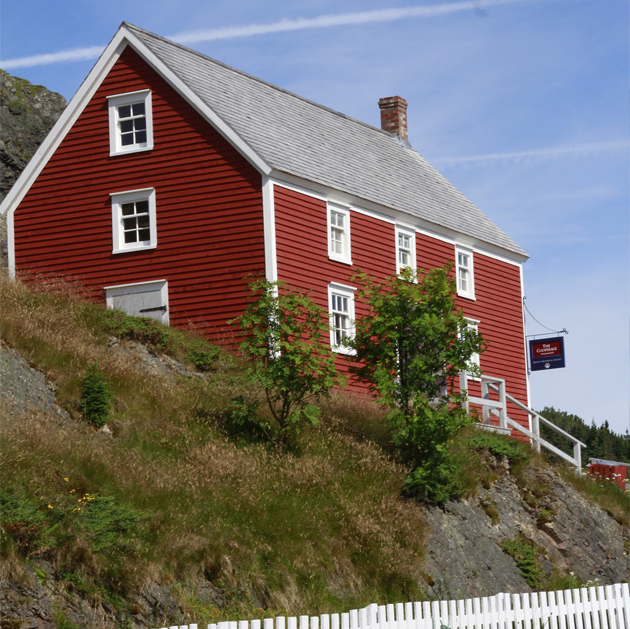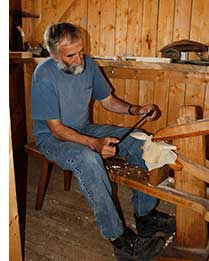 Since at least as early as the 17th century, the shoreline and area adjacent to the cooperage was used for fisheries and shipping-related activities. It was initially used as part of a seasonal "fishing room" for processing and drying codfish. Subsequently, it was used for an expanding mercantile enterprise owned and operated by the Taverner, Lester, Garland and Ryan families.
Since at least as early as the 17th century, the shoreline and area adjacent to the cooperage was used for fisheries and shipping-related activities. It was initially used as part of a seasonal "fishing room" for processing and drying codfish. Subsequently, it was used for an expanding mercantile enterprise owned and operated by the Taverner, Lester, Garland and Ryan families.
An early painting of the Lester Premises suggests that a smaller cooperage may have been erected in the meadow in the 1760s. Two other illustrations of the Lester Premises show what are thought to be cooperages. The earliest (produced by an unknown artist) is thought to date from the 1760s and shows a rather small, single-storey building with a steep-pitched gable roof situated at the north end of the premises behind two shoreline structures. The second illustration of the premises shows what is thought to be a cooperage produced by Royal Engineer Thomas Skinner circa 1800. It highlights what appears to be an entirely new and significantly larger, possibly two-storey building with a hip roof, in more or less the same location, but with the main axis oriented in the opposite direction.
Another extremely useful representation of the Trinity cooperage appears in an early twentieth century photograph of the harbour and north end premises taken from a point of land to the southeast. The photograph shows clearly the 2.5-storey cooperage with a gable roof in the area to the north of the Ryan’s Shop. It has a chimney at the north end and what appears to be entrances situated mid-way along the east wall facing the water and the other on the south wall. This reflects our cooperage reconstruction.
photograph of the harbour and north end premises taken from a point of land to the southeast. The photograph shows clearly the 2.5-storey cooperage with a gable roof in the area to the north of the Ryan’s Shop. It has a chimney at the north end and what appears to be entrances situated mid-way along the east wall facing the water and the other on the south wall. This reflects our cooperage reconstruction.
In 2007, construction began to rebuild this structure and it officially opened in 2008. It now operates as a living history museum where you can see the cooper at work producing many items that would have been made at the time the original building stood.
The Cooperage is open from June 2 to October 12 from 9:30 am - 5:00 pm daily. The price of admission is $23.00 per adult. Seniors and Students $18.00 per person. Children and Youth 16 years and younger are admitted free of charge. Admission includes entry to eight historic sites in the Town: the Visitors Centre, Lester-Garland House, Lester-Garland Premises (Ryan’s Shop), Cooperage, Green Family Forge, Hiscock House, Trinity Museum and Fort Point.
Visitors may purchase their Trinity Experience pass at Fort Point or the Lester-Garland House.
